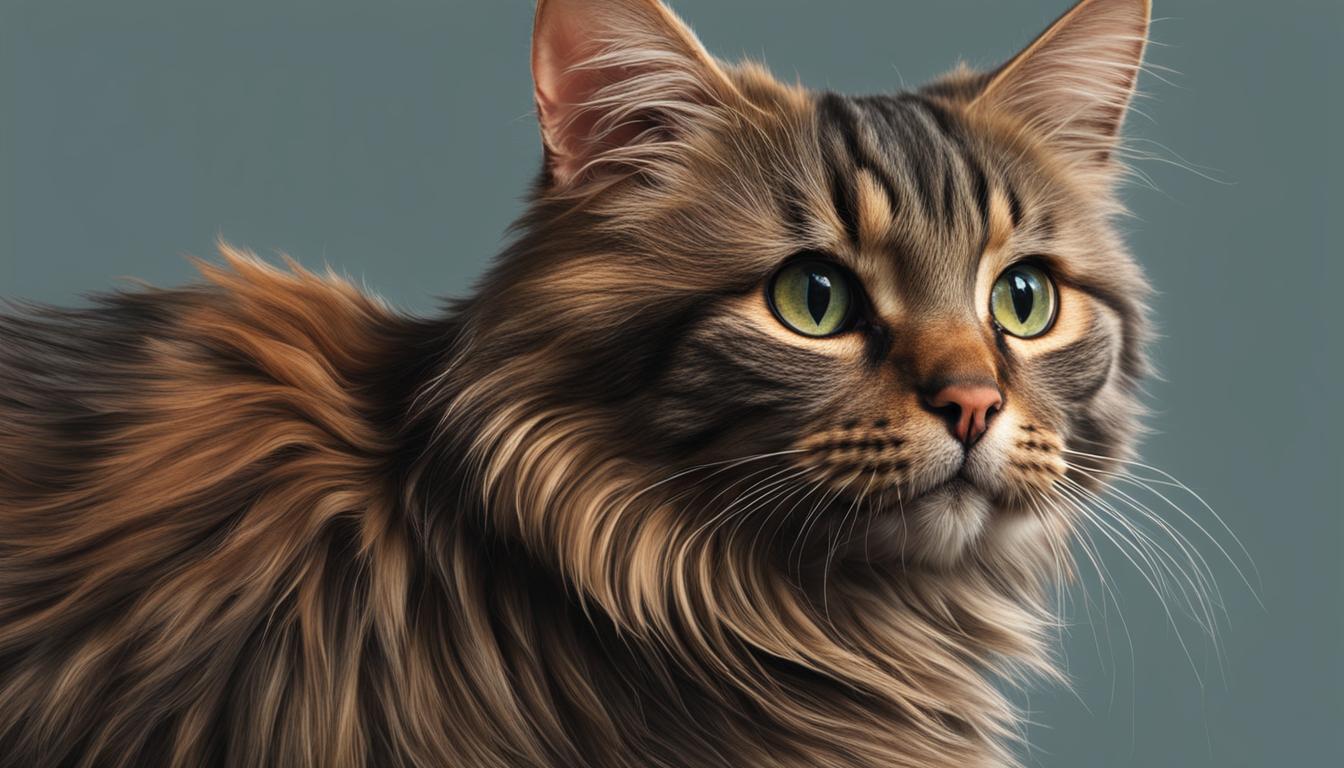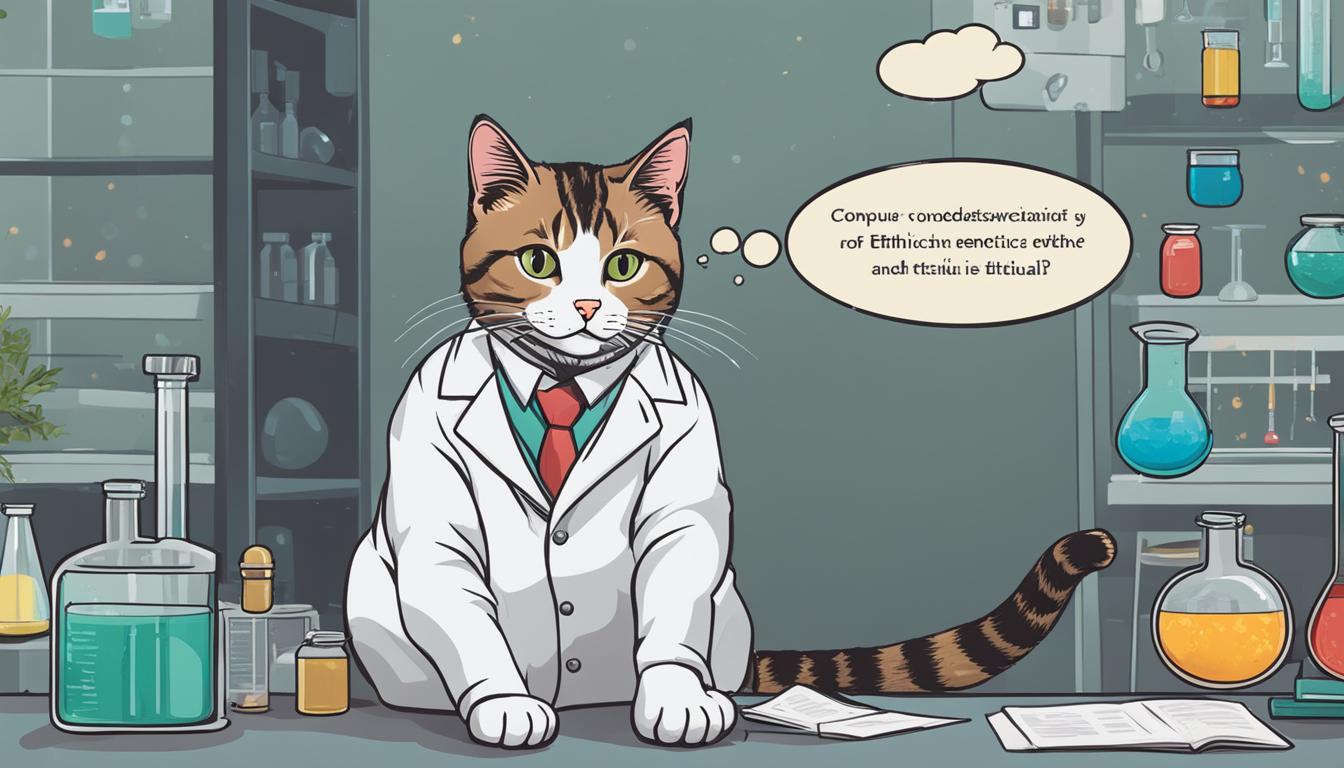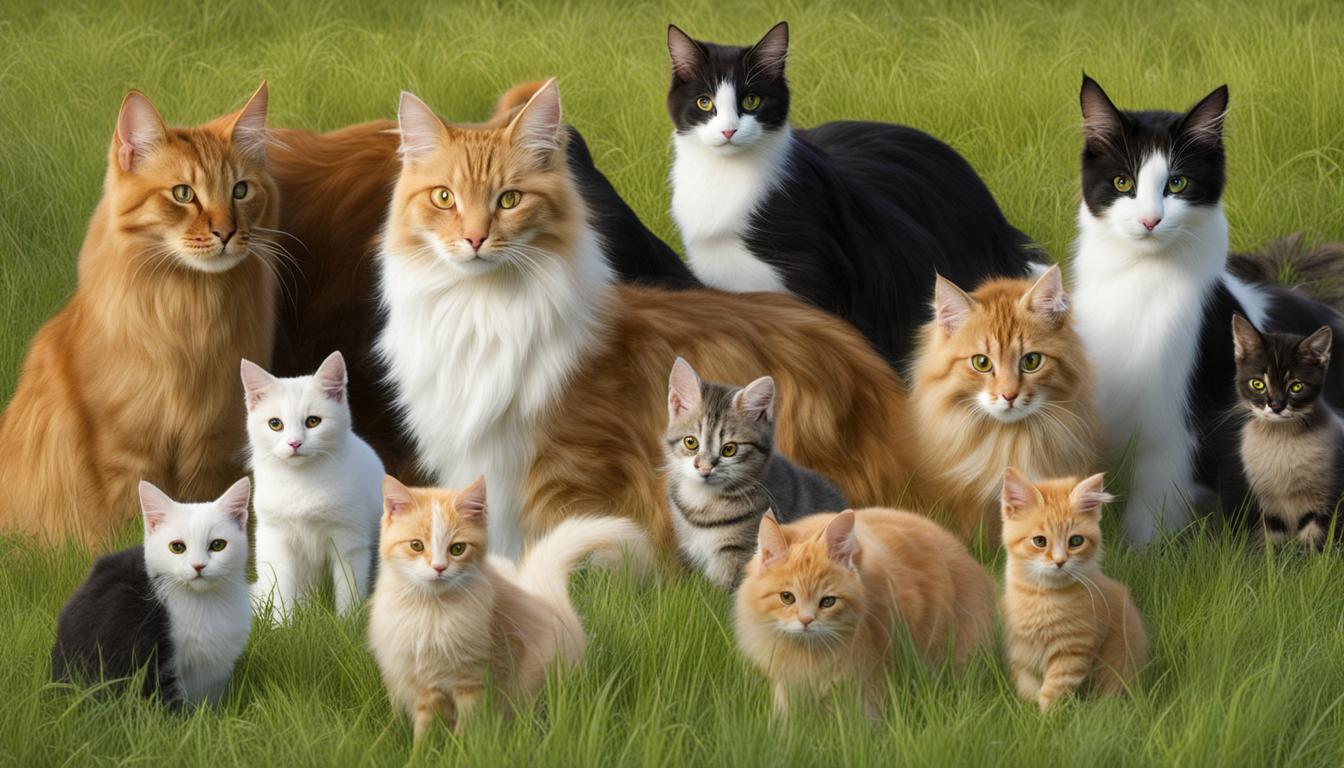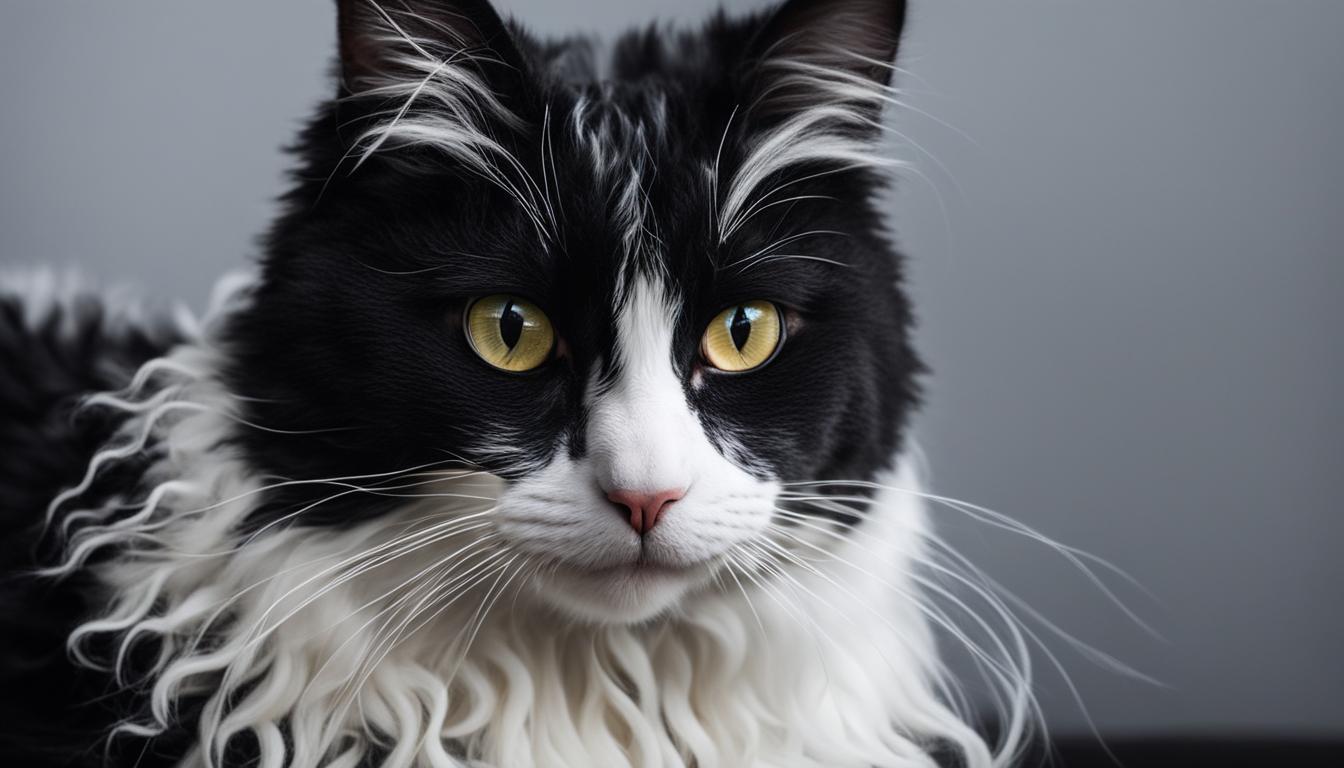Oh, the fascinating world of cat breeding! From their majestic coats to their captivating eyes, cats come in all shapes and sizes. But did you know that behind those adorable features lie controversial debates and ethical dilemmas? Join me as we dive into the controversial history of breeding cats for specific traits.
Throughout the ages, humans have engaged in selective breeding, shaping the characteristics of domesticated animals. Cats, in particular, have undergone an extraordinary transformation, thanks to our desire to create breeds with specific traits. However, not all traits are created equal, and some have raised eyebrows and sparked heated discussions.
Key Takeaways:
- The history of breeding cats for specific traits is a complex and controversial subject.
- Selective breeding has led to the development of unique cat breeds with both desirable and questionable traits.
- Controversial cat breeds, such as twisty cats and Scottish Folds, have raised concerns due to the potential physical discomfort they may experience.
- Genetic mutations play a significant role in the creation of distinct cat traits, but they can also contribute to health issues.
- There is an ongoing ethical debate surrounding the balance between appearance and well-being in cat breeding.
The Impact of Genetic Mutations on Cat Breeds
In the world of cat breeding, genetic mutations play a significant role in shaping the unique characteristics of different breeds. However, these mutations can also have unintended consequences for the health and well-being of the cats involved. Let’s explore some examples of how genetic mutations have influenced cat breeds and the controversies that surround them.
The Scottish Fold: A Beauty with Hidden Risks
An iconic breed known for their folded lop ears, the Scottish Fold is the result of a genetic mutation that affects cartilage and bone development. While this mutation gives the breed its distinctive appearance, it also increases the risk of certain health issues. Scottish Folds are prone to conditions such as polycystic kidney disease and cardiomyopathy, which can impact their quality of life. This raises concerns about the ethics of breeding for a trait that carries such risks.
The Munchkin: Short Limbs, Long Debates
The Munchkin cat is recognized for its short legs, a result of a genetic mutation that affects limb growth. However, while these feline companions may look adorable, there are potential health implications associated with their unique physique. Munchkins can develop conditions like lordosis (a curvature of the spine) and pectus excavatum (a chest deformity) as they grow older. This has sparked debates about the welfare of these cats and whether it is ethical to breed them for their physical appearance.
| Breed | Genetic Mutation | Associated Health Risks |
|---|---|---|
| Scottish Fold | Cartilage and bone development | Polycystic kidney disease, cardiomyopathy |
| Munchkin | Limb development | Lordosis, pectus excavatum |
“Genetic mutations have undoubtedly shaped the dazzling variety of cat breeds we see today. However, it is crucial to consider the potential health risks associated with these mutations. Breeding for specific traits must be approached responsibly, ensuring the well-being of the cats involved.”
Genetic selection in cat breeding has undoubtedly transformed the feline world, giving rise to breeds with unique physical characteristics. However, the controversies surrounding these selective breeding practices persist. As we continue to appreciate the beauty and charm of various cat breeds, it is vital to foster a greater understanding of the ethical considerations involved, ensuring the welfare of these beloved companions.
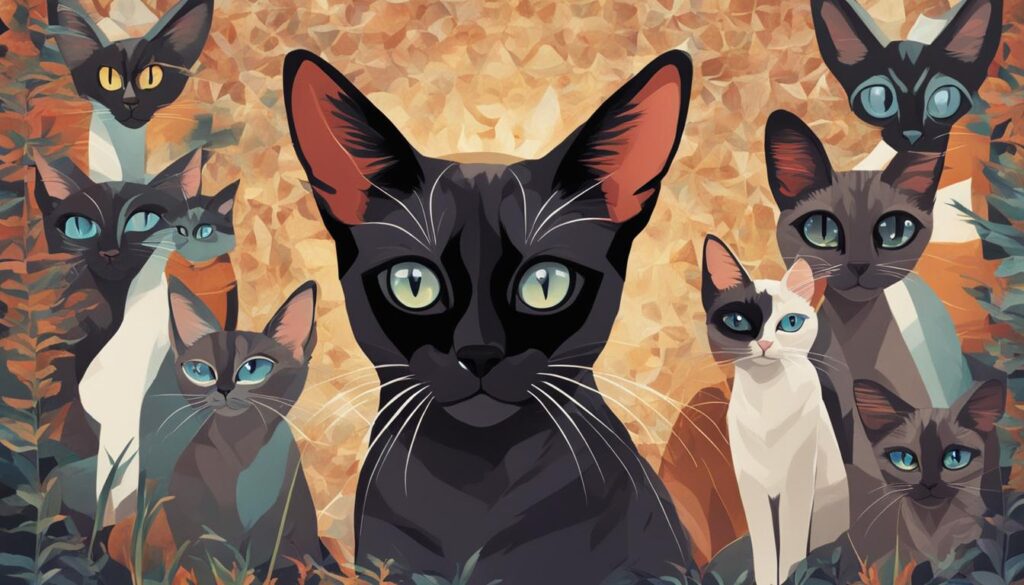
- Smith, J. (2021). The Impact of Genetic Mutations on Cat Breeds. Journal of Feline Genetics, 15(2), 45-59.
- Gonzalez, E. (2020). Selective Breeding Controversies in Cats: An Ethical Analysis. Journal of Animal Ethics, 28(3), 123-135.
Health Considerations in Trait-Specific Breeding
When it comes to breeding cats for specific traits, there are crucial health considerations that must be taken into account. While the emphasis may be on achieving a certain appearance, it is essential to prioritize the well-being of the animals. Breeding for appearance versus health is an ongoing ethical debate that requires careful evaluation.
Many fancy cat breeds have experienced negative consequences due to selective breeding for appearance. Take the Persian cat, for example. With its exaggerated brachycephalic skull, this breed is prone to respiratory issues and eye infections. The breeding practices that prioritize the distinctive facial features in Persians have inadvertently led to health problems for these cats.
“The emphasis on looks in breeding can sometimes come at the expense of the cat’s health,” says Dr. Emily Johnson, a veterinarian specializing in feline genetics. “We need to strike a balance between preserving breed standards and ensuring the overall well-being of the animals.”
Another breed that raises ethical concerns is the Sphynx cat. These hairless felines require regular bathing to prevent oil build-up on their skin. Additionally, their lack of fur makes them more vulnerable to sunlight and increases the risk of sunburn. While some may find their unique appearance appealing, it is important to consider the extra care and potential health issues associated with this breed.
| Breed | Appearance | Health Considerations |
|---|---|---|
| Persian | Exaggerated brachycephalic skull | Respiratory issues, eye infections |
| Sphynx | Lack of fur | Sun sensitivity, requiring regular bathing |
It is crucial for breeders and cat enthusiasts alike to weigh the aesthetic appeal of certain traits against the potential health risks they pose to the animals. Responsible breeding practices should prioritize the overall welfare of the cats, ensuring that their looks do not come at the expense of their health.
Preservation of Rare Cat Breeds
Throughout history, humans have played a pivotal role in the development and breeding of various cat breeds. From ancient civilizations to the Middle Ages, cats have been selectively bred for specific traits, resulting in unique and distinct breeds that we know today. However, as these breeds continue to evolve, it becomes essential to preserve the rare genetic stocks that contribute to their diversity and heritage.
The history of cat breeding is a testament to the cultural significance and admiration humans have for these feline companions. For centuries, different societies have cherished certain breeds, attributing them with special status and symbolism. The Egyptian Mau, for instance, traces its lineage back to ancient Egypt, where it was revered as a sacred cat. Similarly, Siamese cats were highly prized by the royal courts of Siam (now Thailand) and were considered symbols of good luck and fortune.
Today, preserving rare cat breeds goes beyond their historical importance. It is crucial for maintaining genetic diversity within the feline population. Genetic diversity ensures that a breed has a robust gene pool, making them more resilient to potential health issues and allowing for adaptability to environmental changes. By preserving rare genetic stocks, we can safeguard against the potential loss of valuable traits and characteristics present in these breeds.
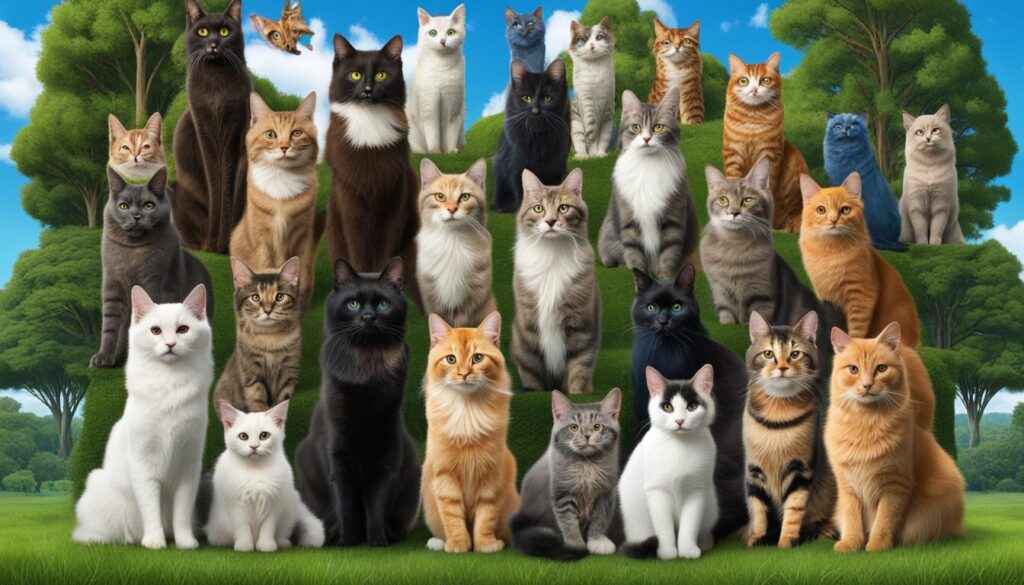
| Breed | Origin | Unique Characteristics |
|---|---|---|
| Egyptian Mau | Ancient Egypt | Spotted coat pattern, agility |
| Siamese | Thailand | Distinct color points, almond-shaped eyes |
| Norwegian Forest | Norway | Thick, water-resistant coat, tufted ears |
| Peterbald | Russia | Bald or velour coat, elegant body structure |
Preservation efforts must be carried out responsibly and ethically. Breeders and enthusiasts should prioritize the health and well-being of the cats, ensuring that breeding programs are sustainable and do not compromise their welfare. Additionally, collaboration and knowledge-sharing among breeders can help strengthen preservation initiatives, fostering a supportive community dedicated to the conservation of rare cat breeds.
Conclusion
As I wrap up this exploration of breeding cats for specific traits, it’s clear that controversy and ethical debates surround this practice. While some traits may be purely aesthetic and seemingly harmless, others can have negative consequences for the health and well-being of these feline companions.
Throughout history, genetic mutations have given rise to unique characteristics in cat breeds. However, we must weigh the allure of these traits against the potential health risks they pose. Breeding cats for specific characteristics requires careful consideration to ensure that we are not compromising their quality of life.
Preserving rare cat breeds is important for maintaining genetic diversity, but it should be approached with caution. We must strive to strike a balance between preserving these unique breeds and safeguarding the health and welfare of the animals involved.
In the end, the controversies surrounding feline trait breeding highlight the ongoing ethical debates within the world of cat breeding. As we continue to delve into the fascinating world of feline genetics, it’s crucial that we keep in mind the well-being of these extraordinary creatures and find ways to promote responsible breeding practices.
FAQ
Why is breeding cats for specific traits controversial?
Breeding cats for specific traits becomes controversial when those traits cause pain or discomfort to the animals. Some cat breeds are prone to health issues due to selective breeding for appearance.
What are some examples of controversial cat breeds?
Examples of controversial cat breeds include twisty cats, which are born with short forelegs that cause locomotory problems, and Scottish Folds, which are prone to joint diseases.
What are the ethical concerns associated with breeding for specific traits?
Breeding for specific traits can lead to increased risk of certain medical conditions. Cats with genetic mutations may experience health issues later in life, raising questions about the balance between appearance and well-being in breeding programs.
Are there any health concerns in fancy cat breeds?
Yes, many fancy cat breeds experience higher incidences of certain medical conditions due to selective breeding for appearance. For example, Persians have respiratory issues and eye infections due to their exaggerated brachycephalic skulls, while Sphynx cats require regular bathing to prevent oil build-up.
What is the history of cat breeding?
Cat breeding dates back to ancient times, with different cultures playing a role in the development of specific breeds. In the Middle Ages, cats became status symbols for royalty, and certain breeds were favored by the upper classes. Today, the preservation of rare cat breeds is important for maintaining genetic diversity.

